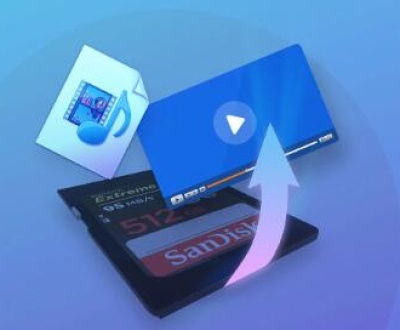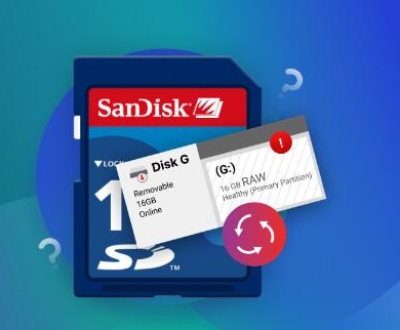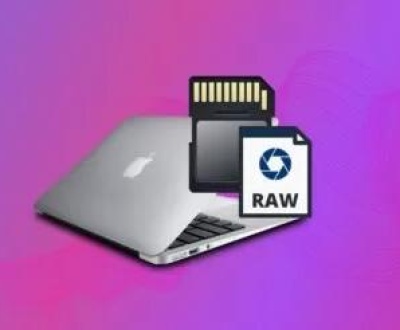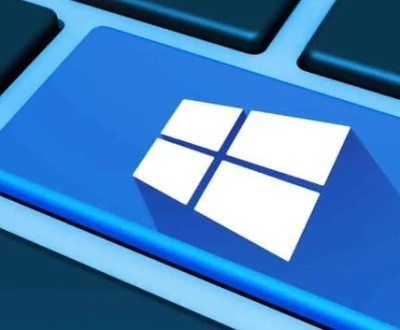USB flash drives are some of the most convenient and widely used storage devices due to their portability, ease of use, and large storage capacities. They are used to store everything from documents, photos, and videos, to work files, software, and backups. Unfortunately, as with any electronic device, USB flash drives can experience issues like corruption, accidental deletion of files, or even physical damage that prevents you from accessing your data.
1. Problem Before Jumping into Recovery
Before diving into the data recovery process, it’s important to understand what might have caused the issue with your USB flash drive. Some of the common causes of data loss or inaccessibility include:
Accidental file deletion: Deleting files by mistake, whether intentionally or accidentally.
File system corruption: A common problem when the USB flash drive is removed without being safely ejected, or when it experiences a sudden power loss.

Bad sectors: Physical damage to the drive that causes part of the storage to fail, leading to inaccessible data.
Virus/malware infection: Malicious software can sometimes corrupt the data or hide the files on the USB drive.
Physical damage: Issues like the drive being exposed to moisture, heat, or physical impacts can damage its internal components.
Partition loss: This can occur due to reformatting or an issue with the drive’s partition table.
Knowing what caused the issue helps determine the most appropriate recovery method.
2. Stop Using the USB Flash Drive Immediately
If you’ve noticed that your files are missing or your USB flash drive is malfunctioning, it’s important to stop using the drive immediately. Continuing to use the drive might overwrite the space that your lost data occupies, which can make recovery more difficult or even impossible.
The sooner you stop using the drive, the higher the chances are that you’ll be able to recover the lost data. Always ensure that you’ve securely removed the device from your computer if you’re troubleshooting or attempting recovery.
3. Check the USB Drive for Physical Damage
Before attempting any software-based recovery, it’s important to ensure that the USB flash drive hasn’t been physically damaged. Here’s what to check for:
Loose or bent connectors: Inspect the USB connector for any visible damage. If the connector is bent or has visible damage, you may not be able to recover the data without professional help.
Visible cracks: A crack or chip in the casing might indicate internal damage.
Signs of water exposure: If the drive has been exposed to water or moisture, it may need to be dried out before attempting recovery.
No light or activity: If the flash drive is not showing any signs of activity when plugged into the computer (e.g., no light flashing, no recognition by the system), this could be an indication of a serious hardware failure.
If you find any physical damage, you may need to consult with a professional data recovery service. Attempting to recover data from a physically damaged flash drive can further damage it, making recovery impossible.
4. Try Connecting the USB Flash Drive to Another Port or Computer
Sometimes, the issue might not be with the USB flash drive itself, but with the USB port or your computer. Before diving into complex recovery steps, it’s worth trying a few basic troubleshooting techniques:
Try a different USB port: The port on your computer might be malfunctioning. Plug the USB flash drive into a different port on the same computer or on a different computer altogether.
Test on a different computer: Sometimes, the issue can be software or settings related to your specific machine. Try connecting the USB drive to a different computer to see if it gets recognized.
Use a different operating system: If you’re using Windows, try connecting the USB drive to a Mac or Linux system, as these operating systems may be able to recognize the device even if Windows can’t.
5. Use Data Recovery Software
Panda Assistant is essentially a data recovery software designed to restore lost, deleted, or inaccessible files from a range of storage devices. Unlike some basic recovery tools, Panda Assistant is equipped with advanced features, making it suitable for more complex data loss scenarios, such as file system corruption, virus attacks, or partition issues. This software is popular for its user-friendly interface and high recovery success rate, even in difficult situations like formatting or accidental deletion.
Key Features of Panda Assistant
File Recovery Across Different Devices: Panda Assistant supports a wide range of storage media, including USB flash drives, SD cards, hard drives, and even cloud storage. This cross-platform support allows users to recover data from almost any device, making it a versatile tool for various recovery scenarios.
Multiple File Types Supported: The software can recover a variety of file types, from documents (Word, Excel, PDF) to images, audio files, videos, and even application files. It can handle various formats like JPG, PNG, MP3. MP4. and many others, ensuring that no matter the file format, the chances of recovery are maximized.
Advanced Scan Modes: Panda Assistant offers both quick scan and deep scan options. The quick scan is designed for recovering recently deleted files, while the deep scan delves deeper into the drive, scanning for files that may have been deleted a while ago or are hidden due to corruption or file system damage.
Preview Files Before Recovery: One of the standout features of Panda Assistant is its ability to preview recoverable files before actually performing the recovery process. This allows users to select only the files they need, making the recovery process more efficient and focused on the most important data.
File System Repair: If the data loss is due to file system corruption or errors, Panda Assistant can also attempt to repair the file system to make the drive accessible again. This can help users recover files from drives that appear to be “raw” or unrecognized by the operating system.
Easy-to-Use Interface: Panda Assistant boasts a simple, intuitive interface that is designed for both beginners and advanced users. Its step-by-step recovery process ensures that users can recover their files without the need for technical expertise, making it ideal for non-professionals who need an accessible solution to data loss.
Safety and Security: Panda Assistant ensures that all data recovery operations are performed safely without further damaging the drive or overwriting existing data. It also does not pose any risk of malware or viruses, ensuring the protection of your data during the recovery process.
5.4 Wondershare Recoverit (Free and Paid Version)
Wondershare Recoverit is a comprehensive data recovery tool that can recover data from USB drives, hard drives, and even crashed computers. It offers a simple interface and a powerful scanning engine.
How to use Wondershare Recoverit:
Download and install Wondershare Recoverit.
Launch the program and choose “External Devices” to recover files from your USB drive.
Select the drive and start the scan.
Preview the recoverable files and select the ones you wish to recover.
Save the recovered data to a secure location.
6. Perform a Check Disk Scan (For File System Corruption)
If your USB flash drive is not showing any files but is still recognized by your operating system, the file system might be corrupted. You can try using a built-in Windows tool called “Check Disk” to repair the drive and recover the lost files.
How to use Check Disk (Windows):
Open “This PC” or “File Explorer” and locate your USB flash drive.
Right-click the USB drive and select “Properties.”
Go to the “Tools” tab and click on “Check” under the “Error checking” section.
Windows will scan and repair any file system errors that may be present.
After the process is complete, check if the files are accessible.
7. Format the Drive (Last Resort)
If all recovery methods fail, and your USB drive is still not functioning properly, you may need to format it. Formatting the drive will erase all the data on it, but in some cases, it may help make the device usable again.
How to format a USB drive (Windows):
Open “This PC” or “File Explorer” and locate the USB drive.
Right-click on the drive and select “Format.”
Choose the file system (FAT32 or exFAT) and ensure “Quick Format” is checked.
Click “Start” to begin formatting.
Note that formatting is a last resort, and it is recommended only if you’ve exhausted other data recovery options. Formatting may help resolve corruption or partition issues, but it will erase all data on the drive, potentially making recovery impossible without professional assistance.
About us and this blog
Panda Assistant is built on the latest data recovery algorithms, ensuring that no file is too damaged, too lost, or too corrupted to be recovered.
Request a free quote
We believe that data recovery shouldn’t be a daunting task. That’s why we’ve designed Panda Assistant to be as easy to use as it is powerful. With a few clicks, you can initiate a scan, preview recoverable files, and restore your data all within a matter of minutes.
Subscribe to our newsletter!
More from our blog
See all postsRecent Posts
- Retrieve deleted videos from sd card 2025-04-25
- How to retrieve damaged sd card? 2025-04-25
- Retrieve photos from sd card 2025-04-25

 Try lt Free
Try lt Free Recovery success rate of up to
Recovery success rate of up to









